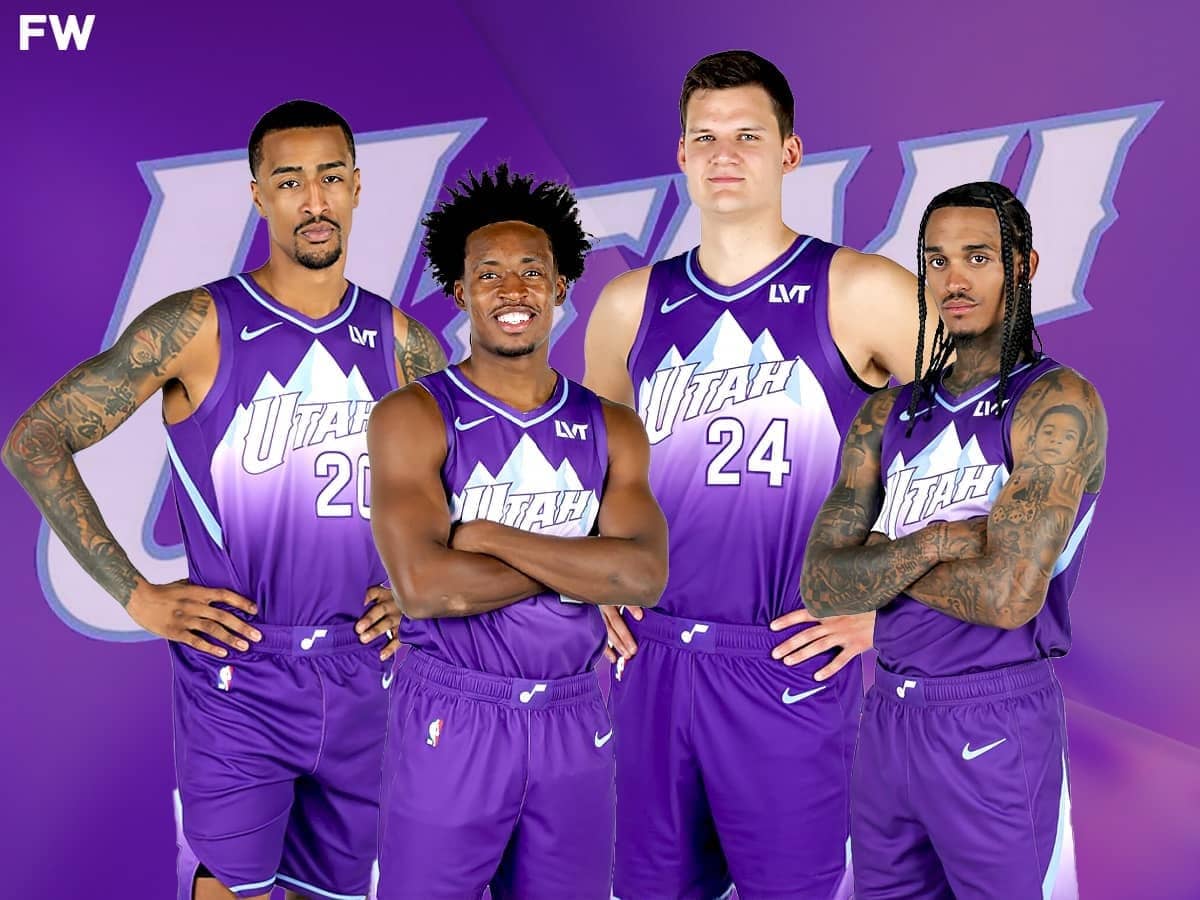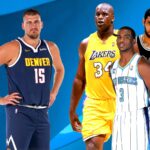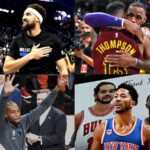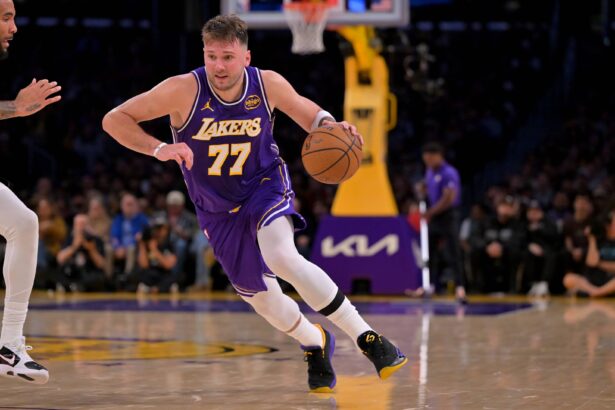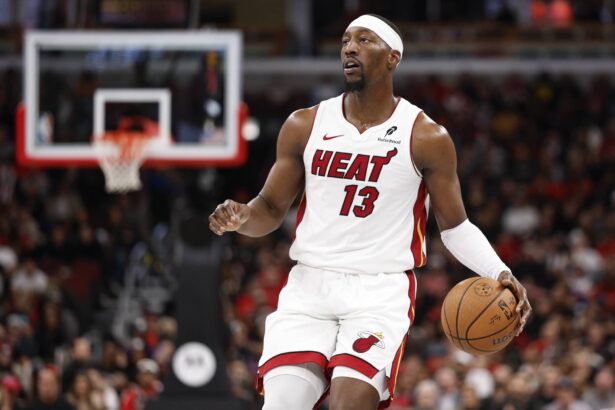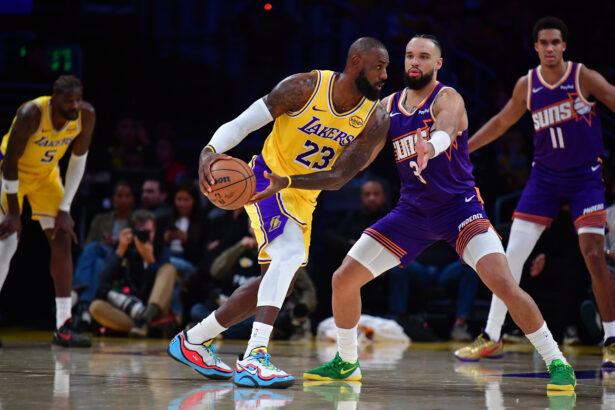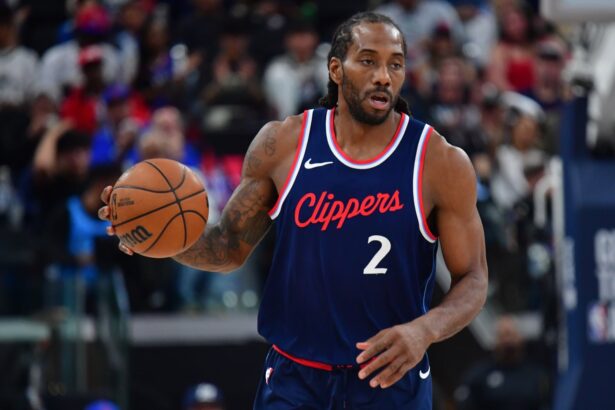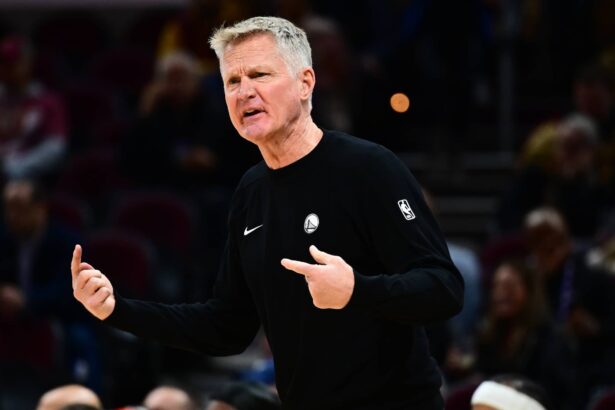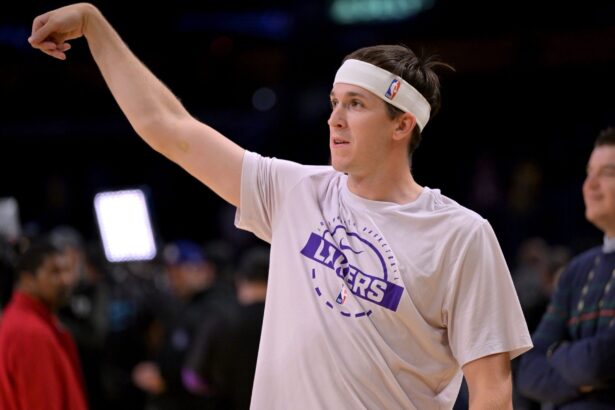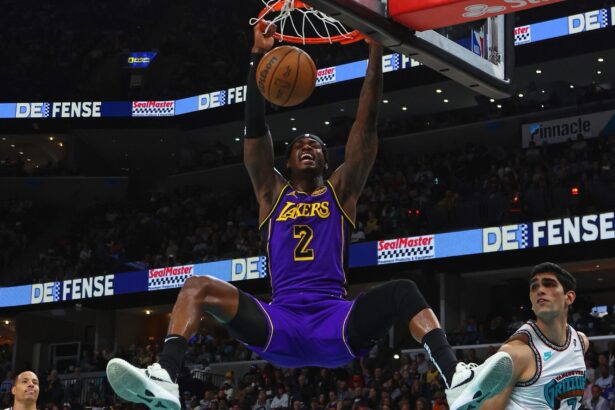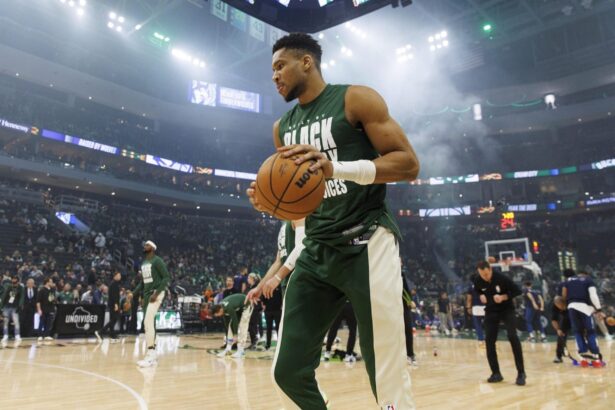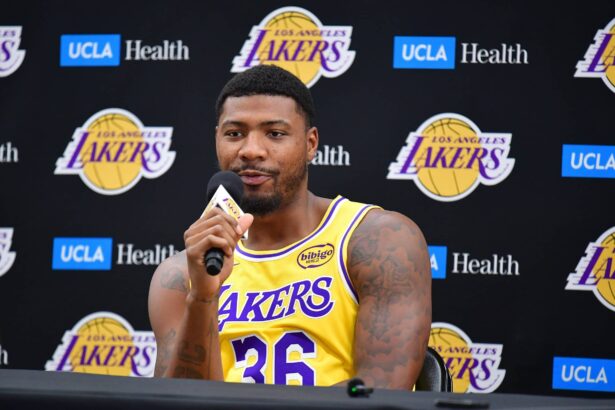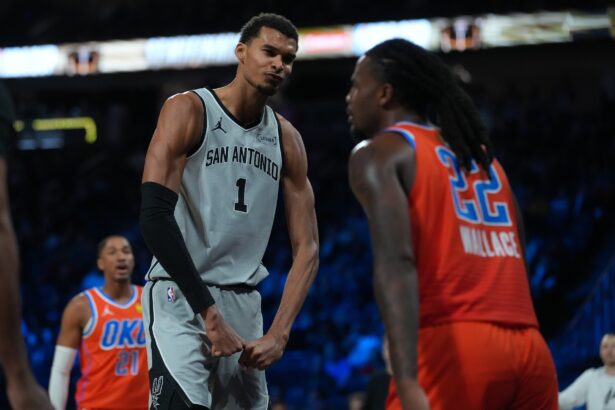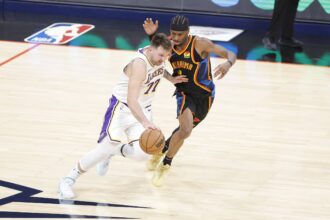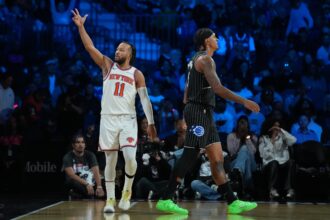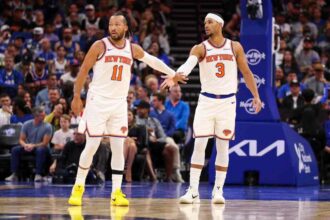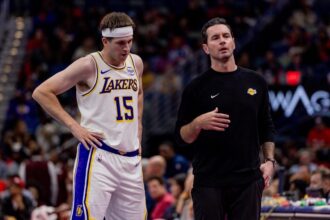The Utah Jazz are at a crossroads this season, struggling to find consistent form while juggling a roster full of veteran players who could bring solid returns on the trade market. With a slow start and a young core ready for more responsibility, it only makes sense for the Jazz to consider moving some of their vets for picks or young talent that fits their long-term vision. From scoring spark plugs like Jordan Clarkson to versatile bigs like John Collins, let’s break down one trade idea for each veteran that could help Utah get the pieces it needs to move forward.
Miami Ready To Turn Up The Heat With John Collins Deal
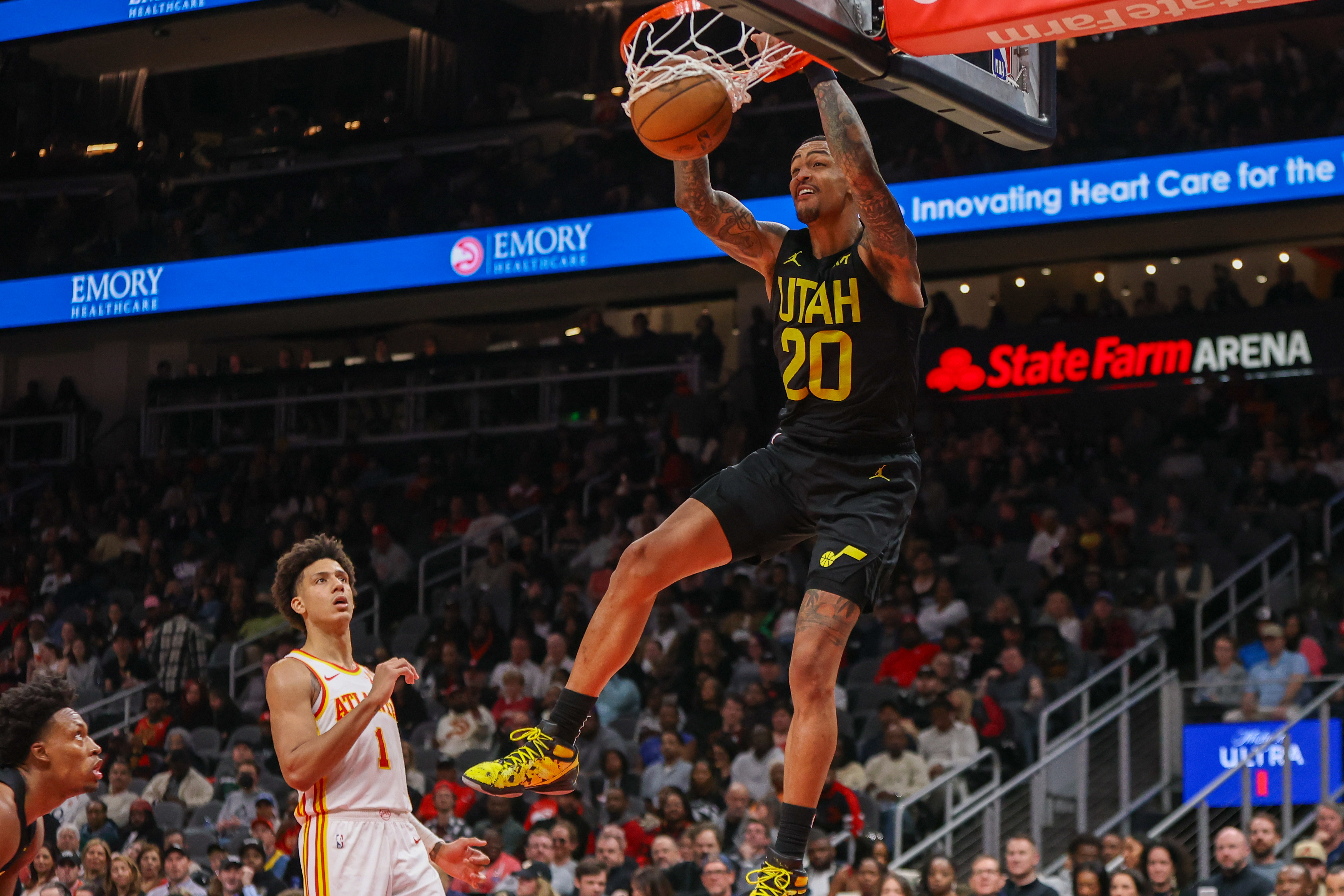
Heat receive: John Collins
Jazz receive: Duncan Robinson, Haywood Highsmith, Josh Richardson, 2030 first-round pick
The Miami Heat would bring in John Collins, and it’s a trade that makes a ton of sense for them. Collins has been putting up 17.1 points and 7.7 boards per game this season, and his game would fit nicely alongside Bam Adebayo. Collins isn’t just a bruiser down low; he can step out and hit from deep, shooting around 37.5% from three so far. That range would open things up for Bam to operate in the paint, letting the two of them run some interesting pick-and-roll sets that Miami’s offense could really use right now.
The Heat aren’t exactly setting the world on fire this season, sitting at 4-6 and coming off a tough overtime loss to the Pistons, even after Tyler Herro dropped 40 points. They need a little extra firepower, especially for those tight games where they keep falling short. Collins could be that guy who helps them close games out, giving Jimmy Butler and Herro a bit of breathing room on offense.
In return, Utah the Jazz pick up Duncan Robinson, who, while he’s had ups and downs, can still be a real threat from three and another trade chip for future assets. Highsmith and Richardson add some defensive grit and veteran presence that Utah could use, plus that 2030 first-round pick gives them a nice asset down the road as they build for the future.
All in all, this deal has potential for both teams. Miami gets a versatile big who adds spacing and scoring punch, and Utah continues stockpiling assets and adding solid pieces for their rebuild. Win-win? Looks like it.
Lakers Roll The Dice On Walker Kessler And Collin Sexton
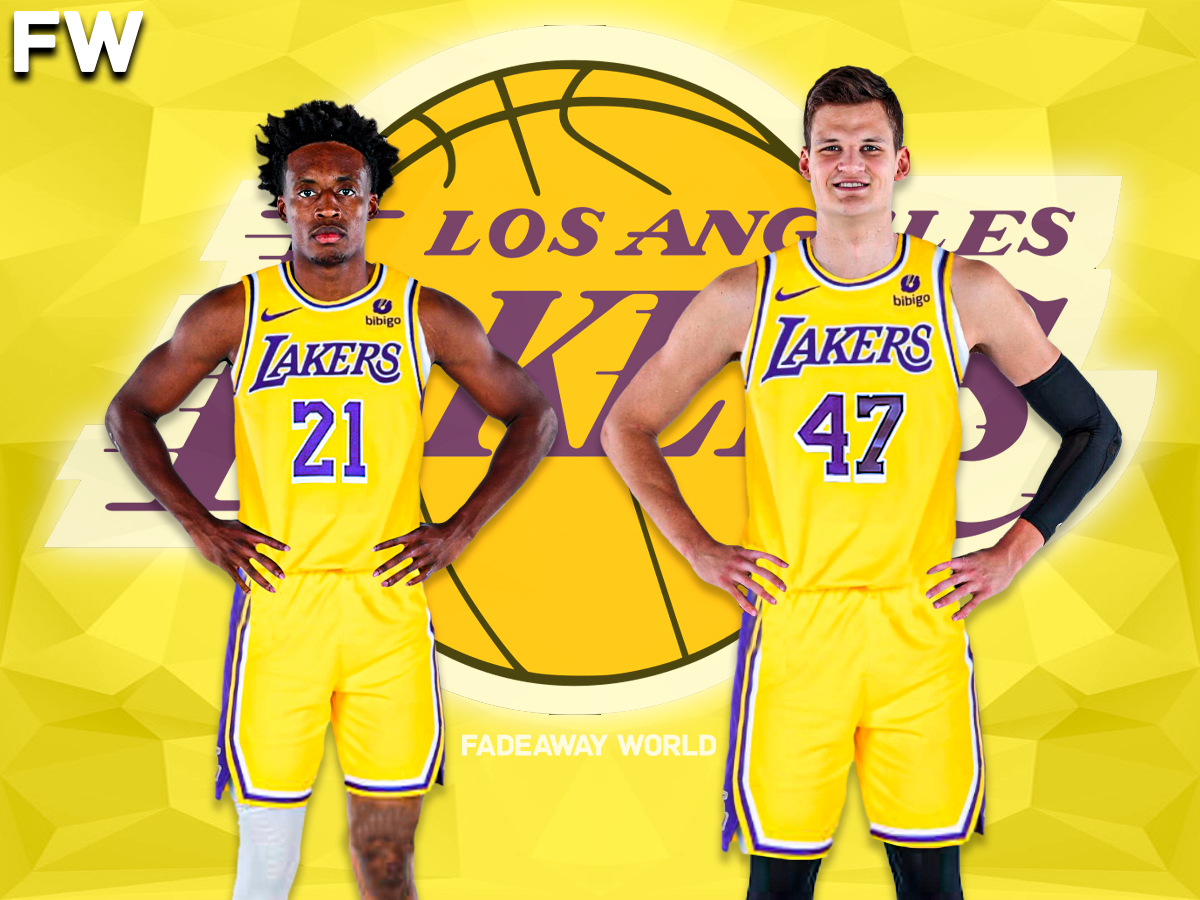
Lakers receive: Walker Kessler, Collin Sexton
Jazz receive: D’Angelo Russell, Max Christie, 2029 first-round pick, 2031 first-round pick
The Lakers might be making a bold move to shake things up by going after Walker Kessler and Collin Sexton from the Utah Jazz. Right now, the Lakers are sitting around the middle of the Western Conference with a 7-4 record, and it’s been a pretty bumpy start to the season. They’ve shown flashes, but the team still needs consistency, especially with LeBron James’ performances being amazing and Anthony Davis doing his best to anchor the defense solo. Bringing in a young shot-blocking specialist like Kessler would give them some much-needed stability on the defensive end, and Sexton could bring some serious firepower off the bench—something they’ve been sorely missing.
Kessler is averaging 9.2 points, 10.7 boards, and almost 2.8 blocks per game this season, which is exactly the type of rim protection and rebounding the Lakers need. Pairing him with Davis would make the Lakers’ paint an absolute nightmare for opponents, helping reduce the defensive load on Davis. With Kessler, Davis would have a legit partner-in-crime on defense, and LeBron could focus more on offense and creating without having to worry so much about plugging every defensive hole. Plus, Kessler is just 22 years old, which fits the Lakers’ vision of bringing in younger pieces who can eventually take over as LeBron rides off into the sunset.
Now, on to Collin Sexton, who is averaging 15.7 points and 3.1 assists off the bench for the Jazz, shooting a respectable 44% from the field. He’s a scoring spark plug—one of those high-energy guards who can get hot quickly and change the pace of a game. For a Lakers squad that’s been lacking consistent production from their guards outside of Austin Reaves, adding Sexton could give them a much-needed jolt off the bench. Sexton’s fearless style fits perfectly with a team looking to grind out wins. Imagine him coming in and running the floor with LeBron feeding him on the break—it’s the type of energy boost the Lakers’ second unit needs, especially given their struggles to score efficiently when LeBron sits.
To make this trade happen, the Lakers would be saying goodbye to D’Angelo Russell—again. D’Lo’s second stint in LA hasn’t exactly been the redemption arc many were hoping for. He’s been inconsistent and recently found himself coming off the bench, which is basically a red flag for his future with the team. He’s been in and out of the lineup as the Lakers experiment with different rotations, and let’s be real—D’Lo might be better suited for a team that’s not looking to contend this season. The Jazz, who are more about development right now, could be a good spot for him to play more freely.
The Lakers are throwing in a 2029 and 2031 first-round pick, which has become a pretty familiar theme with this franchise. They’re all about “win-now,” and if it means shipping off future assets, they’re willing to make that bet. Adding Kessler and Sexton now might give them that boost they need for the season, and they figure LeBron won’t be around then anyway, so why not go all-in? But these picks are still valuable, especially to a team like Utah that’s looking to build for the future. The Jazz would get to stash them in their pile and keep stacking assets, which has become their thing since they started their rebuild.
For the Jazz, this trade is about staying the course in their rebuild. They’re taking on Russell, who’s on an expiring deal, so they’re not locked into anything long-term with him. They get to see if D’Lo fits with their system or let him walk at the end of the season. Max Christie is a young player who could get some minutes and show his potential on a developing Jazz squad. Plus, those first-rounders could be pretty valuable, especially if the Lakers are out of contention by then. It’s a win-win for Utah: they get more assets for the future without giving up anything that disrupts their rebuilding timeline.
In the end, this trade could be just what both teams need: the Lakers add some much-needed defensive depth and bench scoring, while the Jazz continue their asset-accumulating strategy. It’s a high-risk, high-reward play for LA, but if it pays off, they might just have the balance they need to make a real push in the West.
Knicks Need A Spark And Jordan Clarkson Could Be The Answer
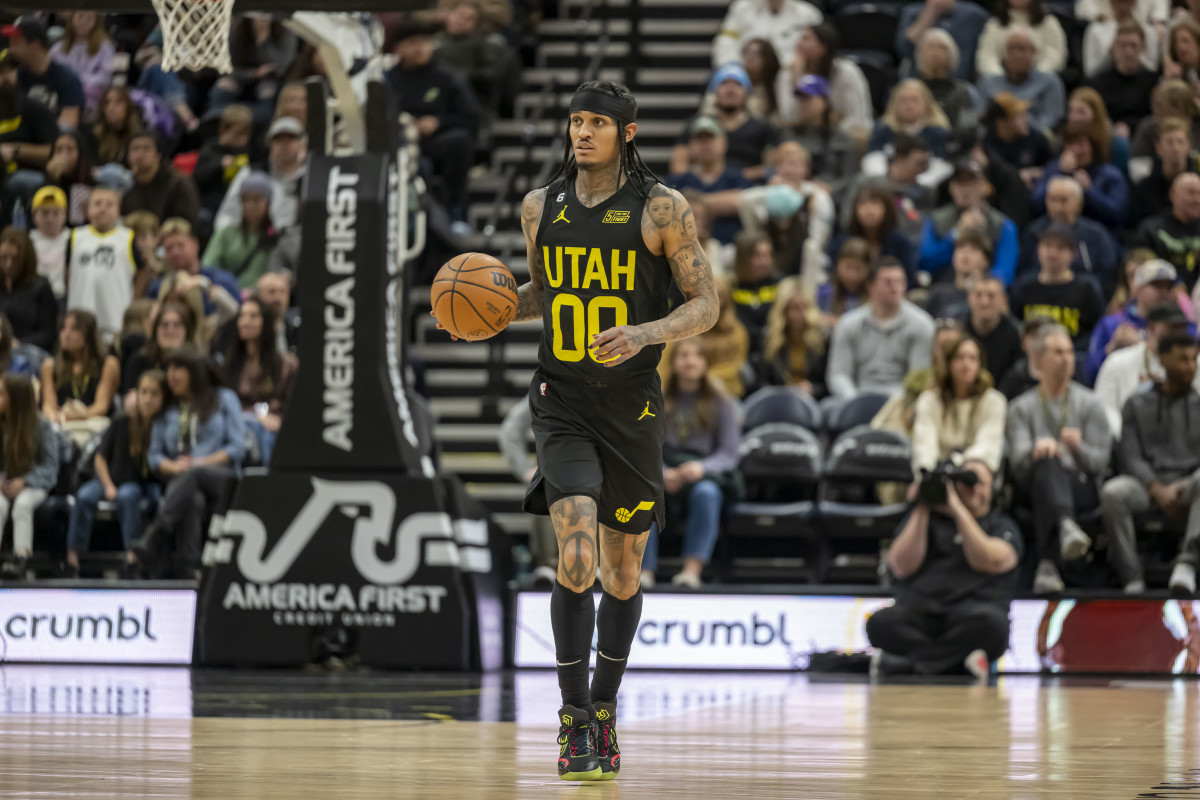
Knicks receive: Jordan Clarkson
Jazz receive: Mitchell Robinson
Alright, picture this: the Knicks snag Jordan Clarkson from the Jazz to fix one of their biggest problems this season—their bench scoring, which, let’s be real, has been pretty awful. Right now, the Knicks’ bench is dead last in the league, averaging a measly 19.3 points per game. That’s putting a ton of pressure on Jalen Brunson and Karl-Anthony Towns to carry the load every single night. Clarkson, who’s been putting up 14.4 points a game this season, would bring that much-needed scoring punch off the bench, giving the Knicks some firepower when their starters need a breather.
Now, on the flip side, the Jazz would get Mitchell Robinson. With the Knicks already rolling with KAT as their main man in the middle, Robinson’s role has become a little fuzzy, especially since he’s been dealing with an ankle injury that’s kept him off the court. Towns has been eating up those minutes and dominating; he even dropped a monster 46 points just last night in a tough loss to the Bulls. The Knicks have shown they’re ready to go all-in with Towns as their guy, so Robinson might be more valuable to a team like the Jazz, where he could step in as a defensive anchor if they move Kessler earlier.
For the Knicks, Clarkson’s ability to create his own shot and hit from deep would instantly make their bench more dangerous. No more waiting around for someone to score—Clarkson is that guy who can come in, heat up, and keep the offense rolling. Imagine him coming in and just going off in Madison Square Garden; Knicks fans would love it.
Meanwhile, Robinson gives the Jazz a young, athletic big who can protect the rim and rebound like a beast—perfect for a team that’s looking to build a solid foundation on defense. It’s a move that could give both teams exactly what they need right now: the Knicks get some bench scoring, and the Jazz get a defensive big to grow with their young core.
The Fully Revamped Jazz
Jazz trade: John Collins, Collin Sexton, Walker Kessler, Jordan Clarkson
Jazz receive: Duncan Robinson, Haywood Highsmith, Josh Richardson, D’Angelo Russell, Max Christie, Mitchell Robinson, 2029 first-round pick (Lakers), 2030 first-round pick (Heat), 2031 first-round pick (Lakers)
The Utah Jazz are diving headfirst into a rebuild, turning over nearly half their roster in an attempt to load up on young talent and future picks. Sitting at a tough 2-8 record, it’s become obvious that the current team isn’t competitive enough in a stacked Western Conference, so the front office should shake things up. Out go some key veterans and familiar faces, including Jordan Clarkson, John Collins, Collin Sexton, and Walker Kessler. In return, the Jazz are bringing in a mix of players who offer flexibility and cap space, along with several valuable draft picks that can help build a sustainable future.
Coming back to Utah is a mix of expiring contracts, potential trade chips, and young players with room to grow. Duncan Robinson, though on a pricey deal, can provide shooting, which is something the Jazz could use, especially if he finds his old form. Josh Richardson and Haywood Highsmith add some defensive grit and versatility on the wing, bringing a bit of veteran stability to balance out the youth influx. D’Angelo Russell, on an expiring contract, is a bit of a wild card here—he can provide some playmaking and scoring in the short term, and if he performs well, he could either stick around or be flipped again for more assets at the trade deadline.
The Jazz also pick up Max Christie, a young guard who hasn’t had much time to show his potential but could find a role in Utah’s developmental system. Finally, they’re getting Mitchell Robinson, a defensive-minded big who brings shot-blocking and athleticism to the roster. With Kessler gone, Robinson can step in and help anchor the paint, at least until the Jazz decide if he’s part of their long-term plans.
One big question hanging over Utah’s roster is what they’ll do with Lauri Markkanen. Due to the recent extension he signed, Markkanen is ineligible for a trade this season, but there’s a real chance he could be on the move in the offseason if the Jazz continue down this rebuild path. Right now, he’s still the face of this team, but with so many changes happening around him, it’s hard to say how long that will last. For now, he’ll likely be their go-to scorer and mentor to the younger guys, but if Utah can get solid value for him in a future deal, they might just keep flipping pieces until they have a core that truly fits their vision.
With these trades, the Jazz are clearly committing to a long-term rebuild. The addition of three future first-round picks gives them plenty of options in upcoming drafts, and they’ve now got a roster with enough flexibility to adapt as they see which young players pan out. This isn’t a team that’s going to compete for a playoff spot anytime soon, but they’re setting themselves up to be a future powerhouse if they play their cards right. In the meantime, Jazz fans can expect to see a lot of experimentation and growth as the team finds its footing in this new era.

